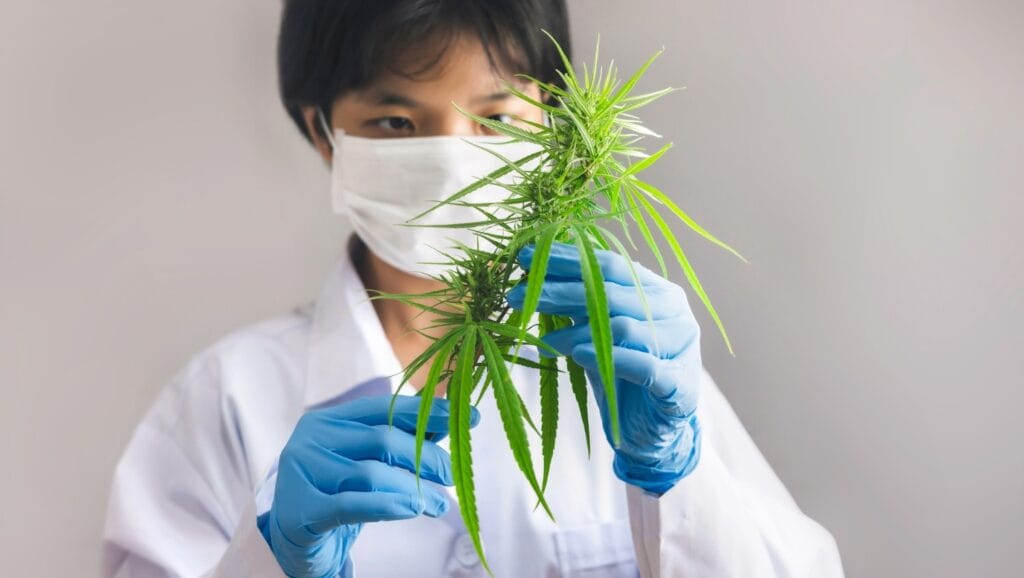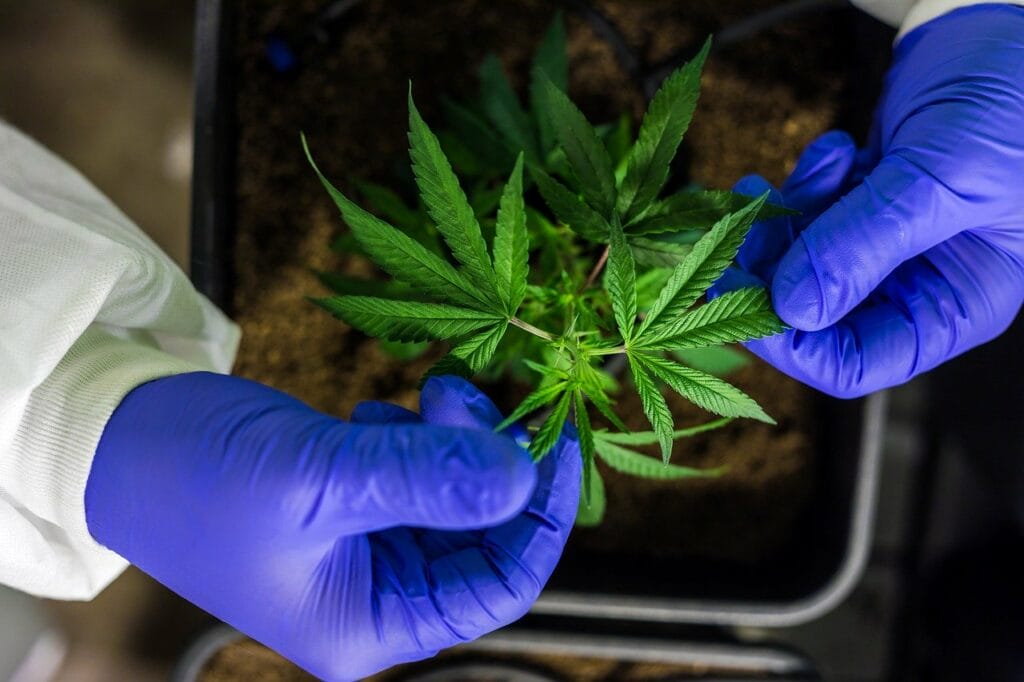Innovation is important in the healthcare industry, especially when it comes to exploring new treatment options for patients. Medical cannabis is one of the latest advancements for treating various disorders.
Healthcare providers are increasingly prescribing medical cannabis as part of treatment plans. Some patients buy weed online to help address their health issues. Discover why this plant is becoming a popular alternative for different treatments.
Table of Contents
- From Being Restricted to Openly Available
- Implementing A Policy to Benefit Canadians
- Cannabis Medications to Keep You Well
- Secondary Aid to Multiple Conditions
- Saving More With a Prescription
- Lowest Prices Online: A Weed Selection for Treatment
- Access Alternative Medication For Your Condition At GrassLife
- Frequently Asked Questions

From Being Restricted to Openly Available
Cannabis has a long history of medicinal use that dates back over 5,000 years to ancient Romania, where people used it due to the presence of Δ6-tetrahydrocannabinol (Δ6-THC) in ashes. The earliest direct evidence of its medicinal application dates to around 400 AD.
In the U.S., the plant was a common ingredient in patent medicines and was listed in the United States Pharmacopoeia from 1850 until its removal in 1942. This removal followed the Marihuana Tax Act of 1937, which, along with subsequent legislation like the Boggs Act and the Controlled Substances Act of 1970, prohibited it and restricted research into its uses.
In 2001, the Canadian government allowed access to care for individuals with severe health conditions not manageable by conventional treatments. Initially, most obtained ganja through personal production.
By 2013, the daily authorized dosages were very high, and usage varied by province, with lower rates in regions with stricter prescribing regulations. Today, access has become more manageable, with the option of Canada buy weed online.
Implementing A Policy to Benefit Canadians
The Canadian government allowed patients with severe health conditions to access the plant if conventional treatments failed. This early system enabled patients to possess, produce, and later purchase marijuana products.
In 2016, the Task Force recognized the need for a separate medical access system amid unprecedented changes. Currently, about 203,000 people obtain the plant for therapeutic purposes. This includes 188,000 Canadians with independent sellers and 15,000 with Health Canada for personal or designated production.
Although this is a decrease from the 371,000 registered at the time of legalization, many continue to rely on the medical access program as it offers them more benefits.
Addressing Therapeutic Needs
It addresses the needs of patients who suffer from debilitating conditions where traditional medications have failed. From those with chronic pain to severe PTSD or terminal illnesses, the availability of these provides a new avenue to manage symptoms and improve quality of life.
Development of Clinical Protocols
The introduction of these treatments has prompted the development of comprehensive clinical protocols. Patients must undergo a thorough evaluation, including health questionnaires and consent for primary care provider communication.
This meticulous approach ensures that only those who meet specific criteria receive prescriptions. This process safeguards against misuse and optimizes patient outcomes.
Expanding Access to High-Quality Cannabis Products
To address gaps and improve support, an important potential improvement is allowing to obtain ganja in person from pharmacies. This model, used in several other countries, could address delivery delays and product shortages and provide patients with valuable consultations.
While pharmacy access would not address all affordability issues, it could be a valuable addition to the existing mail-order system in the cannabis industry. The mail-order system remains available for people who prefer buying weed online or live in areas without pharmacies. Expanding the current system to allow for shipments from pharmacies to healthcare professionals could also support patients in remote regions.
Cannabis Medications to Keep You Well
The growth of the cannabis industry and increased access have led to the development of a wide range of products. This expansion helps meet diverse needs, which makes it easier for them to find a product that suits their specific requirements.
| Product Type | Usage | Form | Consideration |
| Raw (Botanical) | Vaporized for less byproduct from combustion | Dried flower | Rapid onset but dosage is difficult to control |
| Oils | Ingested or used sublingually (under the tongue) for quicker absorption. | Concentrated extracts suspended in a carrier oil, such as coconut or olive oil | Flexibility in dosage and can be used for various conditions. Varying ratios of THC, CBD, or other cannabinoids |
| Solvent Extracts (Tinctures) | Sublingually or added to food and beverages | Liquid extract dissolved in alcohol or another solvent | Precise dosage control and a relatively quick onset of effects |
| Oro-Mucosal Sprays | Applied directly to the mucous membranes inside the mouth for quick absorption | Sprayable liquid | Fast onset and easy dosing Alternative oils or tinctures |
| Topical Applications | Applied directly to the skin and are used for localized relief | Creams, gels, or adhesive patches | Useful for targeted treatment and may help with arthritis or muscle pain. Transdermal patches can provide a controlled release of cannabinoids over time |
| Capsules | Oral consumption | Pre-measured doses of cannabinoids encapsulated in a pill form | Precise dosing and ease of use but have a slower onset |
Secondary Aid to Multiple Conditions
Healthcare professionals consider marijuana for the treatment of conditions studied in multiple clinical trials. Most physicians recommend this plant when primary or conventional treatments have failed.
| Condition | Treatment Notes |
| Chemotherapy-induced nausea and vomiting | High-THC products can effectively treat conditions when newer standard treatments have failed. |
| Epilepsy in children | High-CBD (CBD-only) products have shown positive results in treating drug-resistant epilepsy and are TGA recommended for use alongside existing anti-epileptic drugs. |
| Chronic non-cancer pain | Can complement traditional treatment in relieving pain in some patients. Potential drug interactions can occur with other pain medications. |
| Multiple sclerosis (MS) | Combined CBD: THC products may help relieve MS-related pain, reduce muscle spasticity, and improve quality of life. To date, no studies have compared cannabinoids with standard MS treatments. |
| Palliative (end-of-life) care | Reserved for patients who don’t respond to standard treatment. Potential drug interactions can occur with chemotherapy and other drugs used in palliative care. |
| Cancer-related anorexia | Only recommended if standard treatment has failed. |
Saving More With a Prescription
Although recreational marijuana is easy to obtain anywhere in Canada via reliable shipping using Canada Post for online dispensaries or visiting a local dispensary, therapeutic weed needs a prescription. This allows you to get discounts for their purchases and to know if they can combine the plant with their current medication.
Obtaining a Prescription
- Meet with your primary treating Health Care Practitioner to discuss whether it could treat your symptoms. Your healthcare practitioner will review your medical history and require you to undergo testing to assess your condition.
- Your primary treating Health Care Practitioner may then decide to prescribe it as a treatment for your symptoms (or they may recommend a different course of therapy) if they feel that it is clinically appropriate.
- You will sign an agreement that outlines your responsibilities concerning your prescription.
- Your primary treating Practitioner will complete and sign the document needed to access your prescription.
Lowest Prices Online: A Weed Selection for Treatment
Buying weed online lets you shop from the comfort of your home. Simply provide your name, shipping address, and payment details. You can also choose shipping insurance to ensure the safe delivery of your order. Depending on your location, expect delivery within 3 to 5 business days. In addition to receiving quality products, you may also enjoy free gifts with your order.
| Product | Type | Content | Price |
| Cap junky | Flower | 25% THC and 0.3% CBD | $23.00 |
| OneStop – Sour Cherry Lime THC Gummies 500mg | Edible (Gummy) | 500mg THC | $17.00 |
| Potluck – Infused Chocolate – Cookies & Cream – 300mg THC | Edible (Chocolate) | 300mg THC | $26.00 |
| CBD Tears – Full Spectrum CBD – 1ml | Oil | 1ml | $30.00 |
| Full Melt Hash – Chiquita Banana – 2G | Dab | 2g | $30.00 |

Access Alternative Medication For Your Condition At GrassLife
GrassLife, your marijuana dispensary, offers a range of the highest-quality marijuana medications to support your needs. As a leading online dispensary Canada, we make it easy for you to purchase the highest quality cannabis from the comfort of your home. Our mail-order marijuana services let you order marijuana edibles, flower, or any products that you can use for the best cannabis experience.
Frequently Asked Questions
What should you consider when buying weed online in Canada?
- THC and CBD Ratios: Different products have varying ratios of THC and CBD, which can influence their therapeutic effects. THC is psychoactive and can help with nausea, pain, and appetite, while CBD is non-psychoactive and may aid in managing seizures, pain, anxiety, and psychosis.
- Other Cannabinoids: CBG, THCV, CBN, and CBC may offer additional therapeutic benefits like enhanced sleep, increased appetite, or pain relief.
- Terpenes: Though their pharmacological effects are not fully understood, terpenes contribute to the flavour and aroma and may have their own therapeutic properties. It works together with cannabinoids to enhance the effects of the plant.
Is medical marijuana more expensive than recreational selections?
Medicinal ganja costs less than adult-use variety, primarily because it faces lower taxes. Having a card may allow you to purchase larger quantities.
Prices can vary significantly between regions. For instance, some require a pharmacist to be present in dispensaries. The cost of employing a professional can make weed more expensive.
Is there a difference between medicinal and recreational marijuana?
Therapeutic marijuana has stricter regulations regarding its cultivation, processing, and testing to ensure safety and efficacy.
Recreational marijuana, on the other hand, is used for personal enjoyment and is not intended to address specific conditions. It is available to adults over a certain age without the need for a prescription. Recreational weed has different guidelines that may focus more on general safety and quality rather than therapeutic effectiveness.
Both products use the same plant.



